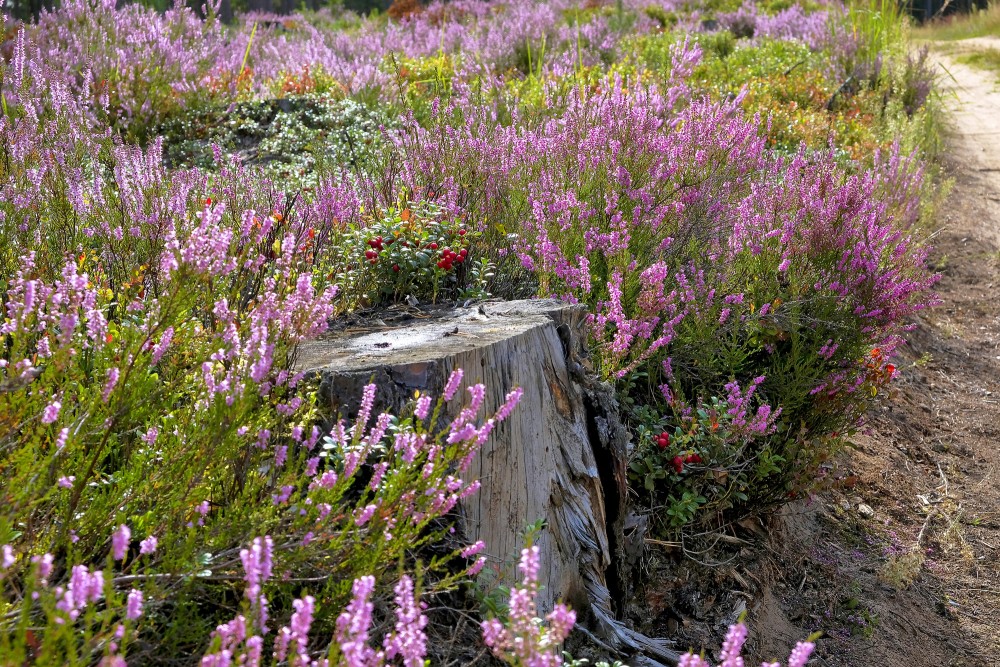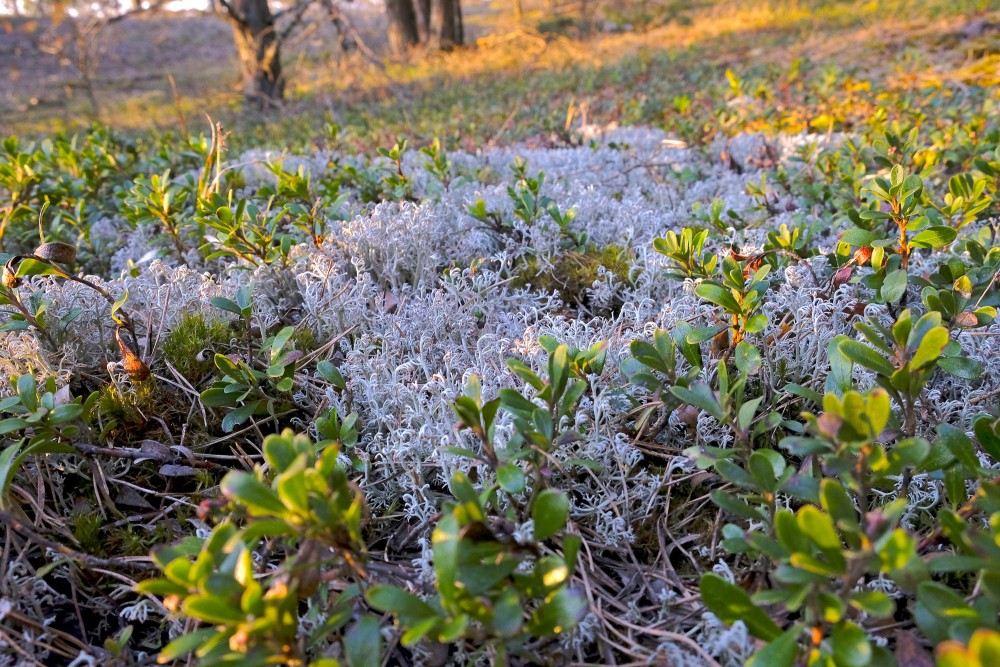Lingonberry (Vaccinium vitis-idaea)
Vaccinium vitis-idaea (lingonberry, partridgeberry, mountain cranberry or cowberry) is a short evergreen shrub in the heath family that bears edible fruit, native to boreal forest and Arctic tundra throughout the Northern Hemisphere from Eurasia to North America. Lingonberries are picked in the wild and used to accompany a variety of dishes in Northern Baltoscandia and Russia. Commercial cultivation is undertaken in the U.S. Pacific Northwest and in many other regions of the world.
| Lingonberry | |
| Vaccinium vitis-idaea | |
| Kingdom: | Plantae |
| (unranked): | Angiosperms |
| (unranked): | Eudicots |
| (unranked): | Asterids |
| Order: | Ericales |
| Family: | Ericaceae |
| Genus: | Vaccinium |
| Species: | V. vitis-idaea |
Names
Vaccinium vitis-idaea is most commonly known in English as lingonberry or cowberry. The name lingonberry originates from the Swedish name lingon for the species, and is derived from the Norse lyngr, or heather.
The genus name Vaccinium is a classical Latin name for a plant, possibly the bilberry or hyacinth, and may be derived from the Latin bacca, berry. The specific name is derived from Latin vitis ("vine") and idaea, the feminine form of idaeus (literally "from Mount Ida", used in reference to raspberries Rubus idaeus).
There are at least 25 other common English names of Vaccinium vitis-idaea worldwide, including:
- foxberry
- quailberry
- bearberry
- beaverberry
- mountain cranberry
- red whortleberry
- lowbush cranberry
- cougarberry
- mountain bilberry
- partridgeberry (in Newfoundland and Cape Breton Island)
- redberry (in Labrador and the Lower North Shore of Quebec)
Description
Vaccinium vitis-idaea spreads by underground stems to form dense clonal colonies. Slender and brittle roots grow from the underground stems. The stems are rounded in cross-section and grow from 10 to 40 cm (4 to 16 in) in height. Leaves grow alternately and are oval, 5–30 mm (0.2–1.2 in) long, with a slightly wavy margin, and sometimes with a notched tip.
The flowers are bell-shaped, white to pale pink, 3–8 mm (0.1–0.3 in) long, and produced in the early summer.
The fruit is a red berry 6–10 mm (0.2–0.4 in) across, with an acidic taste, ripening in late summer to autumn.
Ecology
Vaccinium vitis-idaea keeps its leaves all winter even in the coldest years, unusual for a broad-leaved plant, though in its natural habitat it is usually protected from severe cold by snow cover. It is extremely hardy, tolerating temperatures as low as −40 °C (−40 °F) or lower, but grows poorly where summers are hot. It prefers some shade (as from a forest canopy) and constantly moist, acidic soil. Nutrient-poor soils are tolerated but not alkaline soils.
Varieties
There are two regional varieties or subspecies of V. vitis-idaea, one in Eurasia and one in North America, differing in leaf size:
- V. vitis-idaea var. vitis-idaea L. — syn. V. vitis-idaea subsp. vitis-idaea.
Cowberry. Eurasia. Leaves 10–30 mm (0.4–1.2 in) long.
- V. vitis-idaea var. minus Lodd. — syn. V. vitis-idaea subsp. minus (Lodd.) Hultén.
Lingonberry. North America. Leaves 5–18 mm (0.2–0.7 in) long.
Cultivation
Lingonberry has been commercially cultivated in the Netherlands and other countries since the 1960s. Empress Elizabeth ordered lingonberry to be planted all over Peterhof in 1745.
Some cultivars are grown for their ornamental rather than culinary value. In the United Kingdom, the Koralle Group has gained the Royal Horticultural Society's Award of Garden Merit.
en.wikipedia.org




































